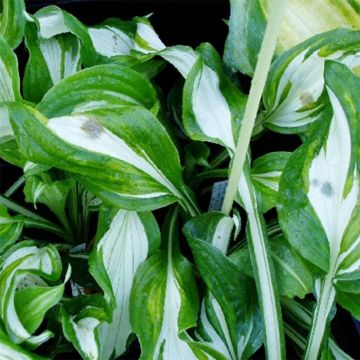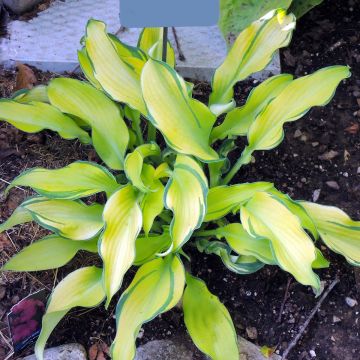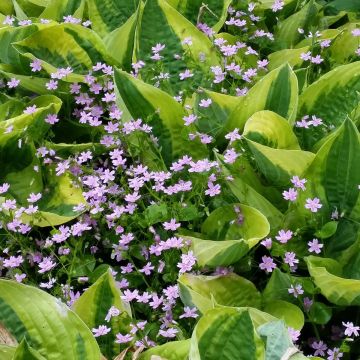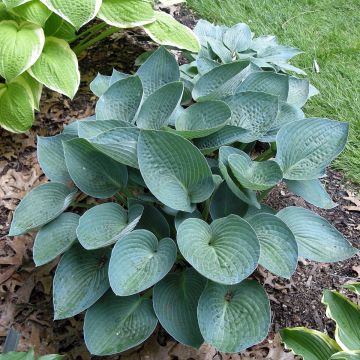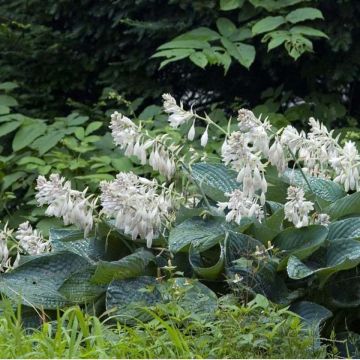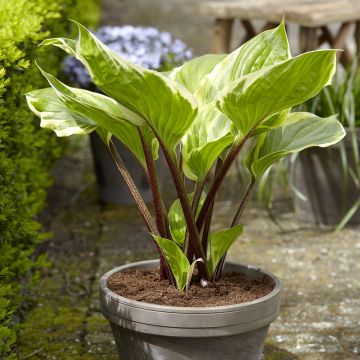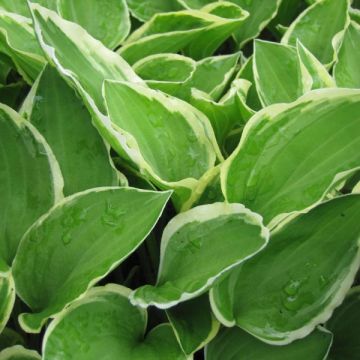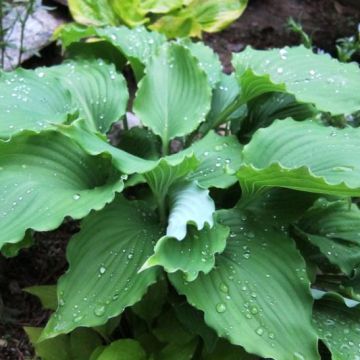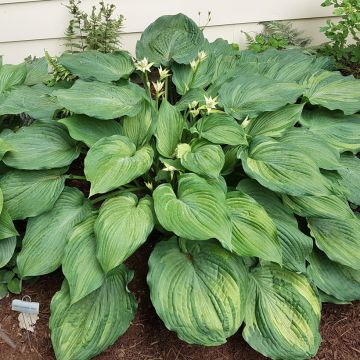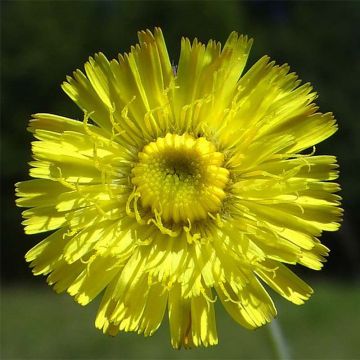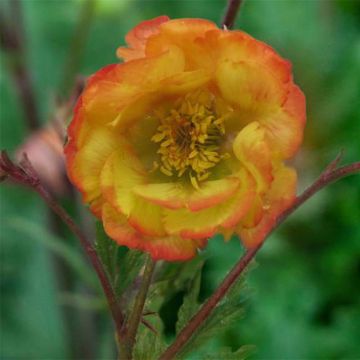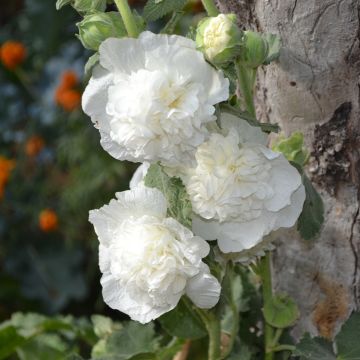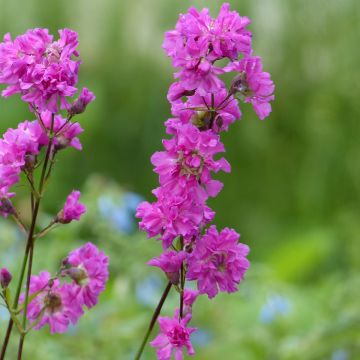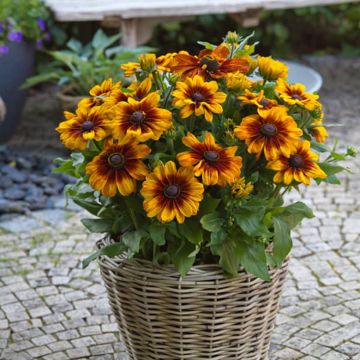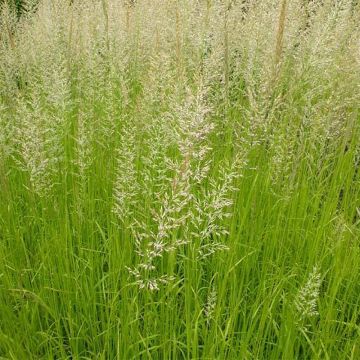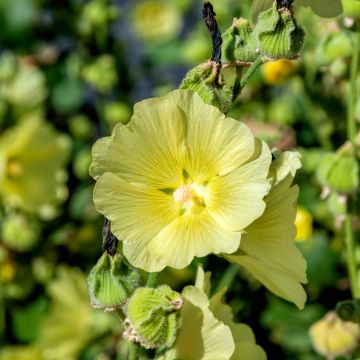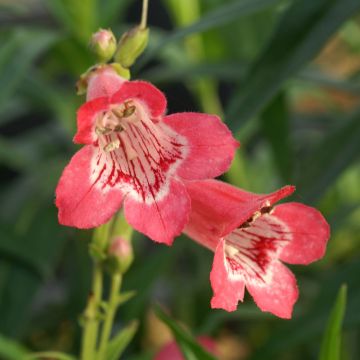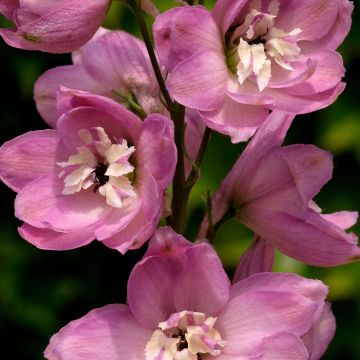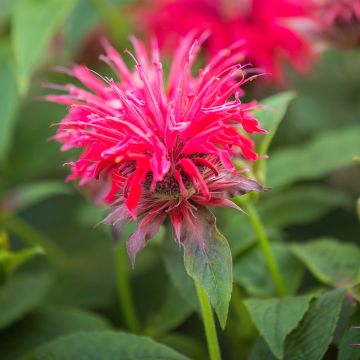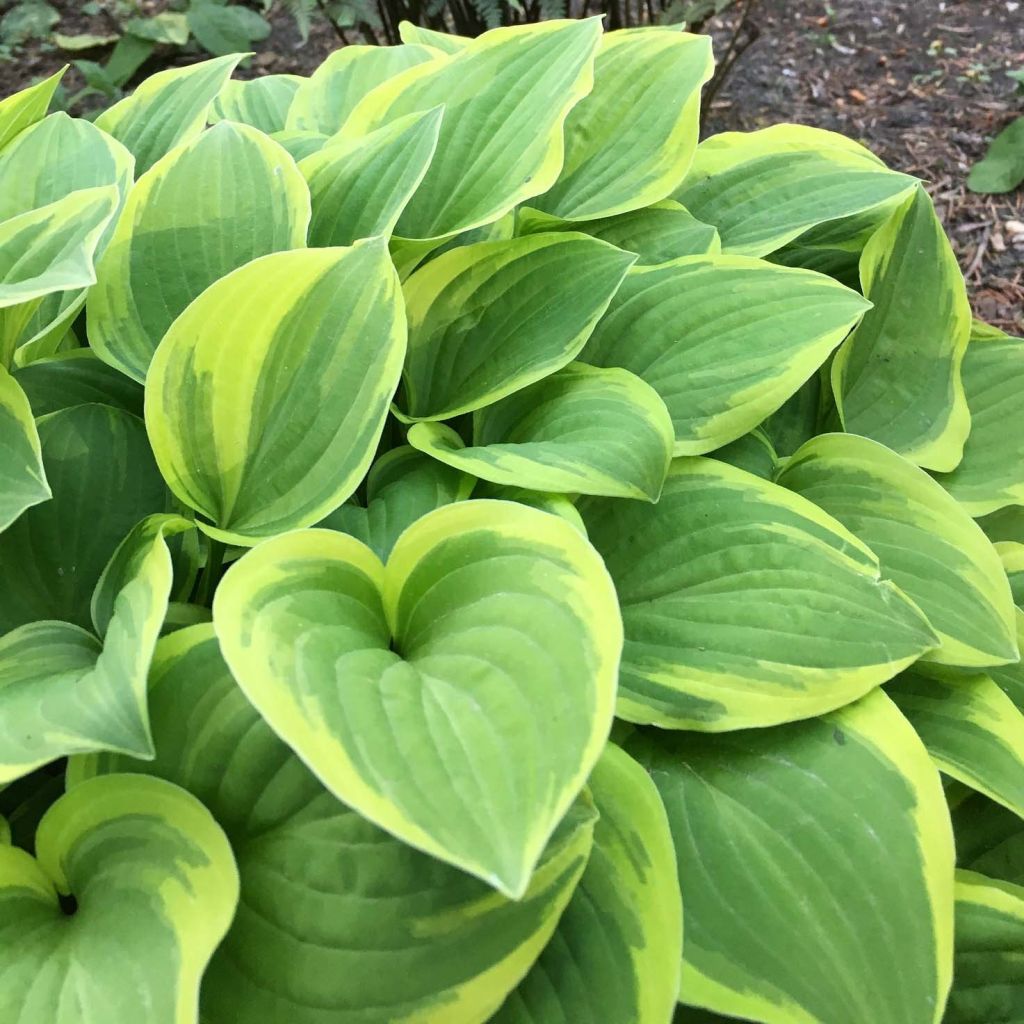

Hosta The King
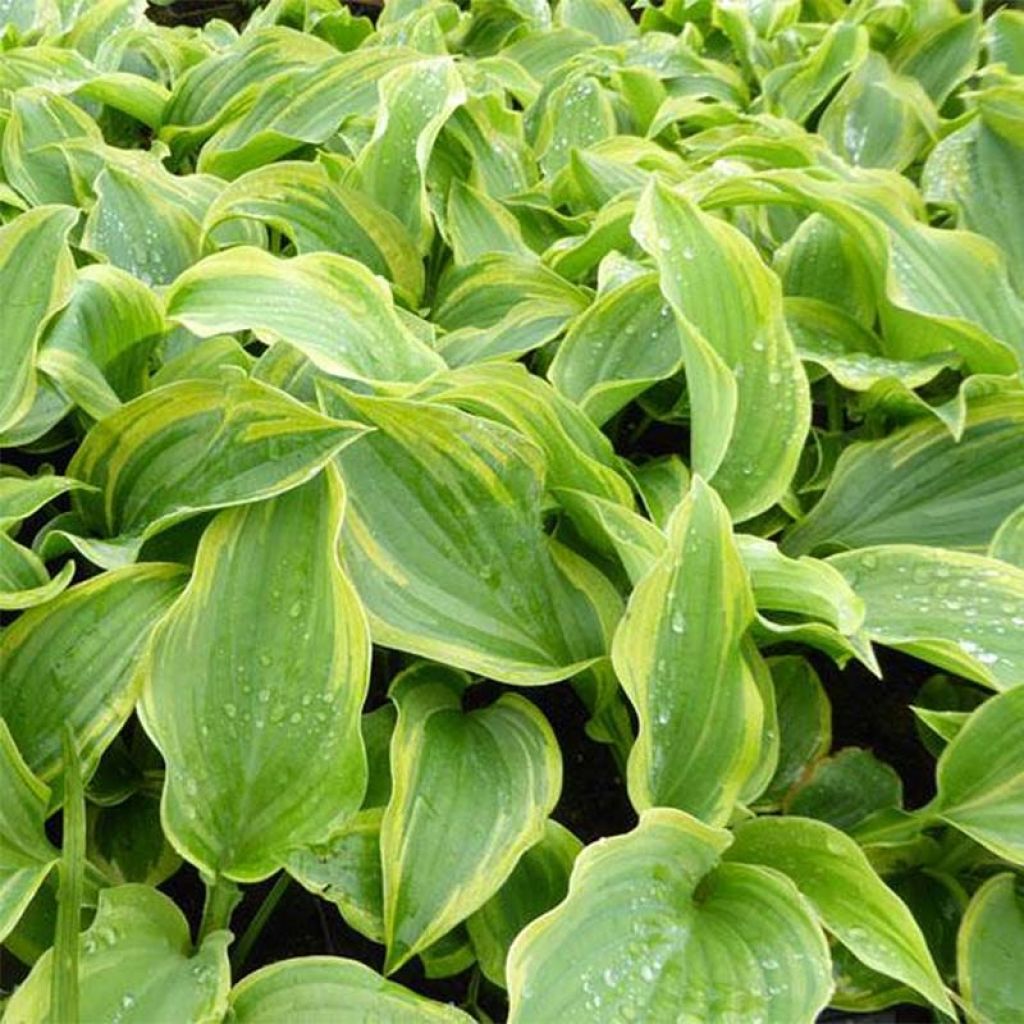

Hosta The King
Hosta The King
Hosta The King
Plantain Lily, Hosta
Good evening! Very nice young plant, tall with lovely well-developed leaves already. I can't wait to see it grow and its colours are very soft, I think. It adds a bit more to my collection of hostas, which impresses everyone who visits my garden. These plants inevitably catch people's attention, and amazed people are always eager for explanations about these lovely plants. A delight, so thank you for offering these beauties.
Françoise Marie, 23/05/2020
This item cannot be shipped to the selected country
Delivery charge from €5.90
Delivery charge from €5.90
More information
Delivery charge from €5.90
Delivery charge from €5.90
More information
Schedule delivery date,
and select date in basket
This plant carries a 12 months recovery warranty
More information
We guarantee the quality of our plants for a full growing cycle, and will replace at our expense any plant that fails to recover under normal climatic and planting conditions.
From €5.90 for pickup delivery and €6.90 for home delivery
Express home delivery from €8.90.
From €5.90 for pickup delivery and €6.90 for home delivery
Express home delivery from €8.90.
Does this plant fit my garden?
Set up your Plantfit profile →
Description
Hosta 'The King' is a very beautiful plant with exceptional foliage: it forms a large clump of large, thick, slightly wavy green leaves in the centre, with a wide irregular margin that ranges from pale yellow-green to cream in summer. Very ornamental from spring to autumn, the plant comes alive in July-August with its delicate flowering, consisting of stalks bearing long lavender-coloured bells. This variety, which withstands attacks from slugs well, is an excellent shade and semi-shade perennial, in moist soil.
Hostas are perennial plants with deciduous vegetation that disappears in winter. They belong to the lily and hosta families. Hosta 'The King', registered by Jim Schwartz (USA) in 2007, is from a superb seedling of the 'Sir Richard' variety. This variety forms a clump that is wider than it is tall after a few years. It will reach a height of approximately 50cm (20in) and a diameter of 90cm (35in). It is a very hardy and long-lived plant, with foliage being its main asset. The leaf blades, measuring approximately 22.5cm (9in) long by 20cm (8in) wide, are traversed by 12 to 15 pairs of parallel veins. Their shape is ovate, ending in a tapered point, slightly cup-shaped. Their colour is a fairly light green, displaying an irregular margin of 2.5 to 5cm (1 to 2in) in width, yellow-green in colour in spring, radiating towards the centre and surrounded by a grey halo. The margin becomes cream-white in summer. This thick foliage withstands gastropod attacks very well. Flowering takes place in July-August, in the form of spikes 70cm (28in) in height bearing tubular and pendulous bells, mauve-lavender in colour.
Native to China, Korea, and Japan, Hostas are very cold-resistant plants. They are most commonly found as ground cover under deciduous trees, in moist beds or in rockeries and borders, especially near ornamental ponds. The hybrid Hosta 'The King' will blend well in semi-shade with the purple foliage of bugbanes, the beautiful chartreuse-green leaves of lady's mantle, as well as with Claytonia sibirica, with which it forms lovely colourful duos that require little maintenance. This perennial will also thrive alongside corydalis, tall foxgloves, or small violets. All hostas grow well in pots, and can remain in the same container for several years. Choose a special geranium potting soil to use during the growing season. As long as the foliage is not too dense, you can water from the top of the pot. Then place a saucer under the pot where you will pour water, maintaining a constant level in summer.
Hosta The King in pictures
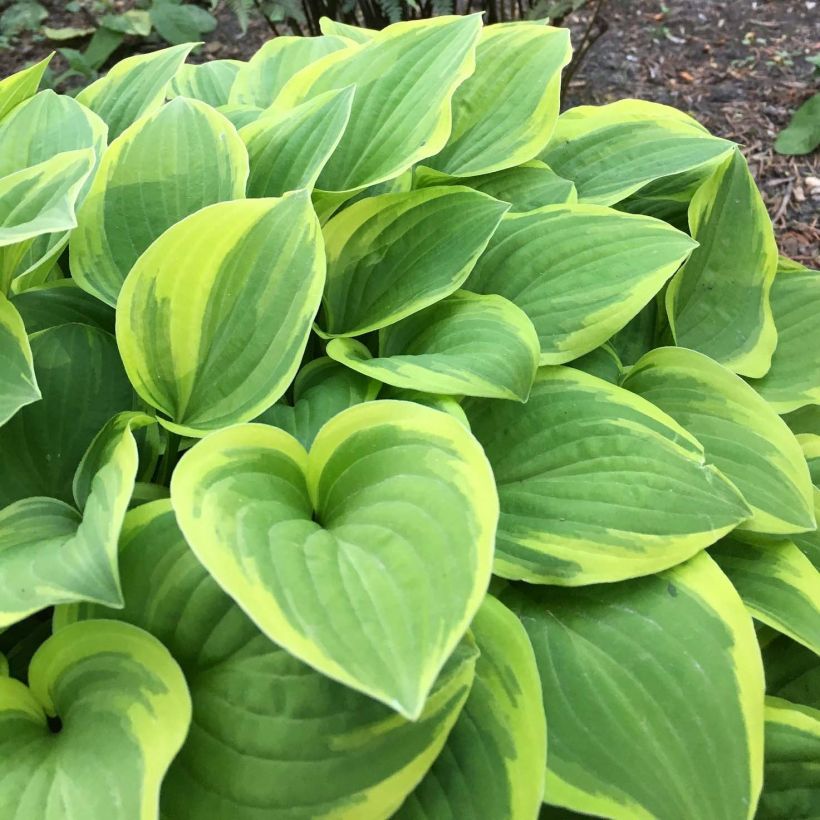



Flowering
Foliage
Plant habit
Botanical data
Hosta
The King
Liliaceae - Hostaceae
Plantain Lily, Hosta
Cultivar or hybrid
Other Hostas - Plantain Lilies
Planting and care
Hostas are planted in spring or autumn. Hostas prefer a deep, fertile, humus-rich, loose soil, preferably neutral to acidic (at least low in limestone), moist to wet throughout the year. Plant them in partial shade or dappled shade and in a sheltered position away from strong winds.
Prepare a planting hole of 20cm (8in) x 20cm (8in) x 20cm (8in). If your soil is heavy, mix equal parts of compost with crumbled soil, partially backfill the hole, and place your plant with the root ball so that the top of the root ball is covered with 3cm (1in) of soil. Adding a slow-release fertiliser (such as bonemeal) will nourish your plant during its rooting period without the risk of burning. Make sure to position the collar well above ground level. Firmly tamp the soil and water thoroughly to eliminate air pockets. If the weather is dry, you will need to water regularly for a few weeks to facilitate the establishment of your plant. Also, water regularly during dry summers.
With their common preference for moist locations, slugs and snails are never far from hostas. Even though blue or variegated hostas often have thicker and tougher foliage, which is less appealing to slugs, these plants still need protection from gastropods. Protect your Hostas by surrounding them with eggshells, coffee grounds, wood chips, or any dry and rough natural substance that repels them. Hedgehogs are the gardener's best allies in the fight against gastropods, as they do not till the soil like chickens and do not attack the tender green shoots of young plants. Finally, some plants have a repulsive odour for slugs, such as wormwood and garlic.
Planting period
Intended location
Care
-
, onOrder confirmed
Reply from on Promesse de fleurs
Summer flowering perennials
Haven't found what you were looking for?
Hardiness is the lowest winter temperature a plant can endure without suffering serious damage or even dying. However, hardiness is affected by location (a sheltered area, such as a patio), protection (winter cover) and soil type (hardiness is improved by well-drained soil).

Photo Sharing Terms & Conditions
In order to encourage gardeners to interact and share their experiences, Promesse de fleurs offers various media enabling content to be uploaded onto its Site - in particular via the ‘Photo sharing’ module.
The User agrees to refrain from:
- Posting any content that is illegal, prejudicial, insulting, racist, inciteful to hatred, revisionist, contrary to public decency, that infringes on privacy or on the privacy rights of third parties, in particular the publicity rights of persons and goods, intellectual property rights, or the right to privacy.
- Submitting content on behalf of a third party;
- Impersonate the identity of a third party and/or publish any personal information about a third party;
In general, the User undertakes to refrain from any unethical behaviour.
All Content (in particular text, comments, files, images, photos, videos, creative works, etc.), which may be subject to property or intellectual property rights, image or other private rights, shall remain the property of the User, subject to the limited rights granted by the terms of the licence granted by Promesse de fleurs as stated below. Users are at liberty to publish or not to publish such Content on the Site, notably via the ‘Photo Sharing’ facility, and accept that this Content shall be made public and freely accessible, notably on the Internet.
Users further acknowledge, undertake to have ,and guarantee that they hold all necessary rights and permissions to publish such material on the Site, in particular with regard to the legislation in force pertaining to any privacy, property, intellectual property, image, or contractual rights, or rights of any other nature. By publishing such Content on the Site, Users acknowledge accepting full liability as publishers of the Content within the meaning of the law, and grant Promesse de fleurs, free of charge, an inclusive, worldwide licence for the said Content for the entire duration of its publication, including all reproduction, representation, up/downloading, displaying, performing, transmission, and storage rights.
Users also grant permission for their name to be linked to the Content and accept that this link may not always be made available.
By engaging in posting material, Users consent to their Content becoming automatically accessible on the Internet, in particular on other sites and/or blogs and/or web pages of the Promesse de fleurs site, including in particular social pages and the Promesse de fleurs catalogue.
Users may secure the removal of entrusted content free of charge by issuing a simple request via our contact form.

































